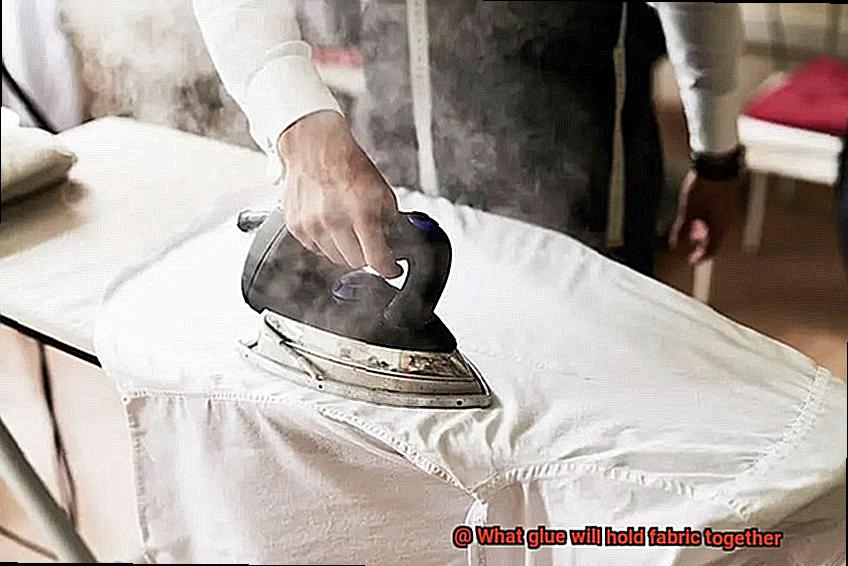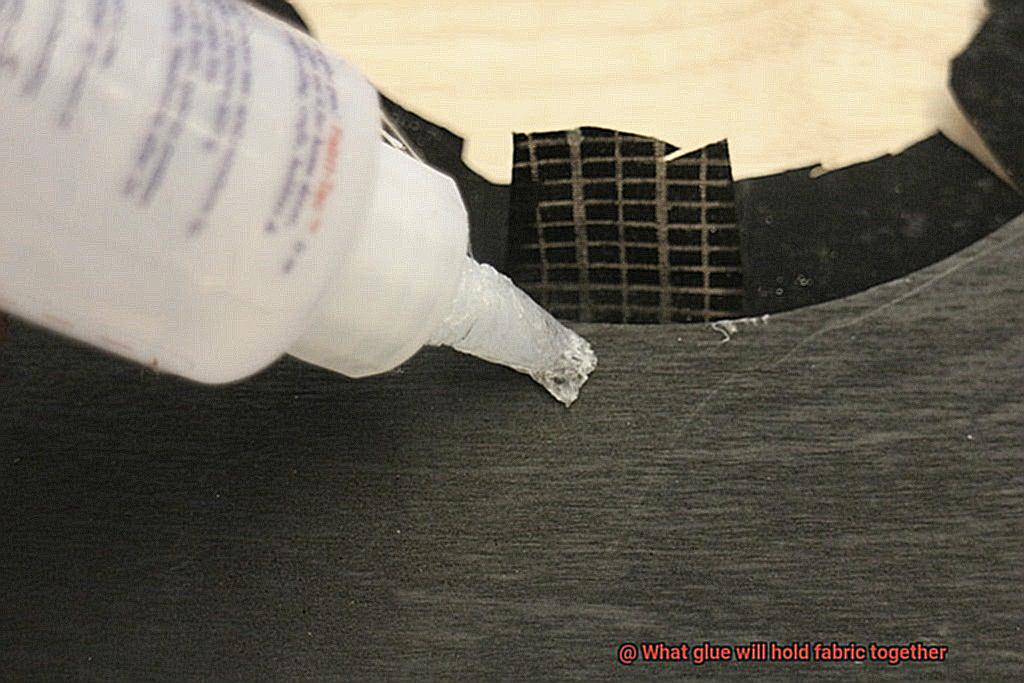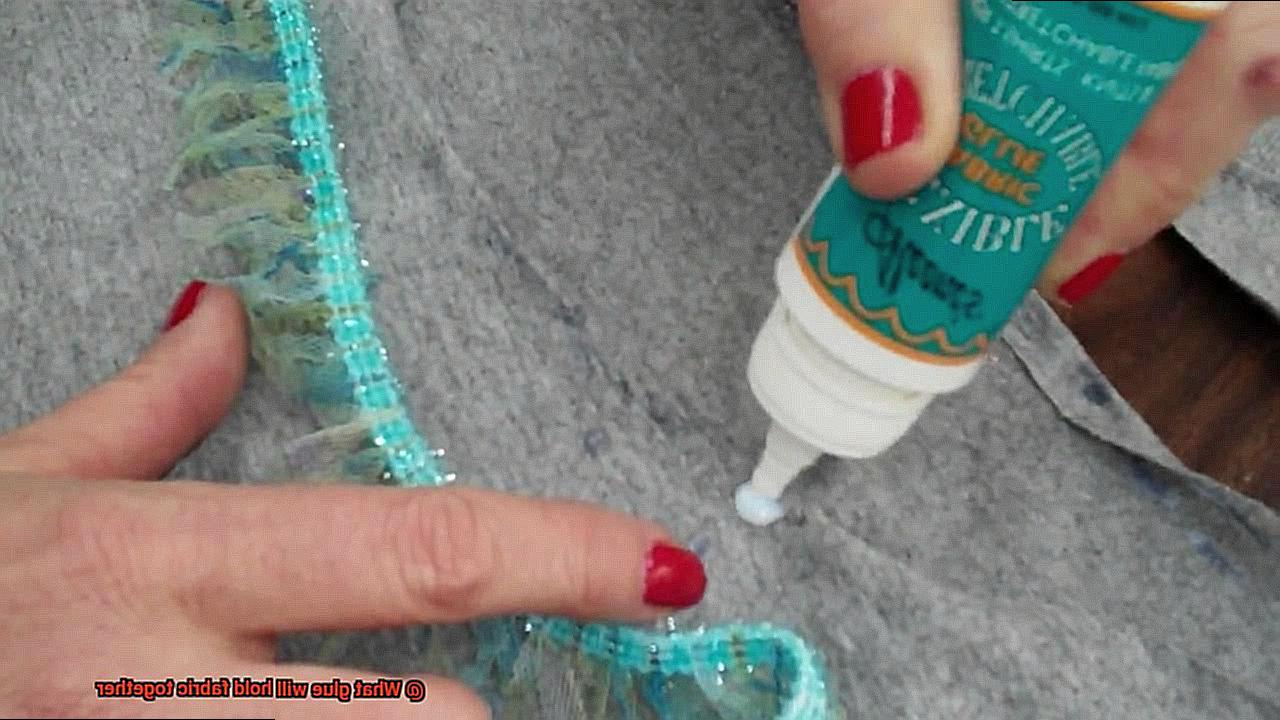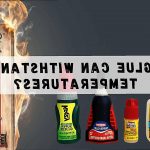Ready to dive into the world of fabric glue? Well, you’ve come to the right place.
When it comes to sticking fabric together, not all glues are created equal. We’re talking about strength, durability, and ease of use here.
So, whether you’re fixing up a torn garment or getting crafty with some DIY projects, we’ve got your back. In this blog post, we’ll explore different types of glue that are commonly used for fabrics.
So, grab a cuppa and let’s get started.
Different Types of Glue for Fabric
Contents
Fabric Glue: Fabric glue, also known as textile adhesive, is specifically formulated to bond fabric to fabric. It is water-based and dries clear, making it ideal for delicate fabrics or those that cannot withstand heat.
Fabric glue is perfect for hemming, repairing seams, and attaching patches or appliques. For example, fabric glue can be used to attach a sequin patch to a denim jacket or hem a sheer chiffon blouse.
The advantage of fabric glue is that it provides a flexible bond that is resistant to washing and dry cleaning. However, it may not be as durable as sewing or stitching.
Hot Glue
Hot glue guns are popular among crafters because they provide a quick drying time and a strong hold. Hot glue can be used on a wide range of fabrics, including cotton, denim, and synthetic materials.
However, be careful when using hot glue on delicate or heat-sensitive fabrics to prevent damage. Hot glue is commonly used in DIY projects like creating fabric flowers or attaching embellishments to fabric. The advantage of hot glue is its versatility and fast drying time. However, it may not be suitable for fabrics that will undergo frequent washing or heavy use.
Spray Adhesive
Spray adhesives provide a temporary bond and are commonly used in craft projects where repositioning may be necessary. They can be used on fabric to create temporary bonds for sewing or quilting projects. For example, spray adhesive can be used to temporarily hold fabric layers together before stitching them. The advantage of spray adhesive is its convenience and ease of use. It allows for precise placement and can be easily removed if needed. However, it may not provide a permanent bond and may not be suitable for all types of fabric.
Epoxy Adhesive
Epoxy adhesives offer a strong and durable bond and are suitable for heavy-duty fabric projects. They typically require mixing before application and are often used in upholstery projects or for bonding fabrics to other materials like wood or metal. For example, epoxy adhesive can be used to attach fabric to a wooden frame for a DIY upholstered headboard. The advantage of epoxy adhesive is its strength and durability. It provides a permanent bond that can withstand heavy use and washing. However, it may not be suitable for delicate fabrics and requires careful preparation and application.
Liquid Stitches
Liquid stitches, also known as fabric adhesives or fabric glues, are specifically formulated for sewing and mending fabric. They provide a flexible and permanent bond that is resistant to washing and dry cleaning. Liquid stitches are great for repairing tears or attaching trims to fabric. For example, liquid stitches can be used to repair a ripped seam or attach lace trim to a dress. The advantage of liquid stitches is their ease of use and versatility. They can be easily applied with a brush or nozzle and provide a strong bond that is resistant to wear and tear. However, they may not be as strong as sewing or stitching.
In conclusion, there are several types of glue for fabric, each with its own unique properties and uses. Fabric glue is ideal for delicate fabrics and provides a flexible bond. Hot glue provides a quick drying time and strong hold but may not be suitable for all fabrics. Spray adhesives offer a temporary bond and are convenient for positioning fabric layers before sewing. Epoxy adhesives provide a strong and durable bond for heavy-duty fabric projects. Liquid stitches are specifically formulated for sewing and mending fabric and provide a flexible and permanent bond.
Fabric Glue
Fabric glue is a versatile adhesive that can be used for various fabric-related projects. From repairing garments to creating crafts, fabric glue offers convenience and ease of use. There are different types of fabric glues available on the market, each with its own unique properties and suitable applications.
- Liquid fabric glue: This type of fabric glue comes in a bottle with an applicator tip, making it easy to control. It is suitable for bonding lightweight fabrics and can create a permanent bond when dried. Liquid fabric glue is great for projects such as hemming pants, attaching patches, or adding embellishments to clothing.
- Spray adhesive: Spray adhesive provides a quick and even application of glue. It is commonly used for larger fabric surfaces or when adhering fabric to other materials like foam or wood. Spray adhesive offers a temporary bond that allows repositioning before it fully sets. It is ideal for projects like upholstery or creating fabric wall art.
- Heavy-duty fabric glue: For more durable projects or fabrics that require washing, there are fabric glues specifically formulated for these purposes. These glues often have added features such as being waterproof or machine-washable. They provide a strong bond that can withstand repeated use and laundering. Heavy-duty fabric glue is perfect for projects like repairing outdoor gear, creating tote bags, or attaching patches to denim jackets.
- Heat-activated fabric glue: Some fabric glues require heat activation to create a stronger bond. This can be done by ironing the glued area, which helps set the glue and make it more durable. Heat-activated fabric glue is great for securing patches or appliques onto clothing.
When using fabric glue, it’s important to follow the manufacturer’s instructions for application and drying times. It’s also worth noting that while fabric glue is a convenient option for many projects, it may not be suitable for all fabrics or applications. Delicate or sheer fabrics may require hand-sewing or specialized techniques like fabric tape. Also, fabrics with special finishes or coatings may not bond well with fabric glue. Always test the glue on a small, inconspicuous area of the fabric before proceeding with the project.
Hot Glue
Hot glue is a versatile adhesive option for bonding fabric. Its strong bond, quick drying time, and ease of use make it an ideal choice for various projects. However, when using hot glue on fabric, there are a few considerations to keep in mind to ensure successful results.
Firstly, it’s crucial to select the right type of hot glue stick for your fabric. There are low-temperature and high-temperature options available. Low-temperature hot glue sticks work well for delicate fabrics, while high-temperature ones are better suited for thicker or heavier materials. Choosing the appropriate glue stick ensures that the adhesive will bond effectively without damaging or distorting the fabric.
To apply hot glue to fabric, it’s important to do so evenly and sparingly. Excessive amounts of glue can seep through the fabric or create unsightly bumps and lumps. Instead, use small dots or thin lines of glue along the edges or seams of the fabric for a secure bond without compromising the appearance.
While hot glue provides a strong bond, in some cases, additional reinforcement methods may be necessary for added strength and durability. Sewing or stitching the fabric together can provide extra support, especially for projects that will undergo frequent use or stress.
It’s crucial to test hot glue on a small area of the fabric before proceeding with larger-scale applications. Not all fabrics are suitable for hot glue, as some may be sensitive to the heat from the glue gun. Testing allows you to ensure compatibility and avoid any potential damage to your fabric.
Epoxy Glue
Epoxy glue, a versatile adhesive known for its strong bonding properties and durability, is commonly used to attach fabric together. This adhesive consists of two parts: a resin and a hardener. When mixed together in the correct ratio, they form a powerful bond that can withstand the test of time.

To ensure a successful bond when using epoxy glue on fabric, it is crucial to prepare the fabric surfaces properly. Begin by cleaning the surfaces with a mild detergent or rubbing alcohol to remove any dirt or debris. It’s essential to have a clean surface for the adhesive to adhere to effectively. Once cleaned, allow the fabric surfaces to dry completely before proceeding.
Next, mix the epoxy resin and hardener according to the manufacturer’s instructions. Achieving the correct ratio is vital for optimal bonding. Be sure to mix thoroughly to ensure a consistent and homogenous mixture.
Using a small brush or applicator, apply a thin layer of the mixed epoxy glue onto one of the fabric surfaces that you wish to bond together. It’s important to spread the adhesive evenly over the entire surface.
Carefully press the second fabric surface onto the glued area, ensuring proper alignment with the first fabric surface. Apply even pressure and hold the fabrics together firmly for a few minutes to allow the adhesive to bond.
If needed, use clips, clamps, or weights to secure the bonded fabric together while the epoxy glue cures. Follow the manufacturer’s instructions for curing time, which typically ranges from 24 to 48 hours.
Once the epoxy glue has fully cured, test the strength of the bond by gently pulling on the fabric. If necessary, reinforce the bond by stitching along the edges of the glued area for added durability.
It’s important to note that epoxy glue can be quite rigid once cured, which may affect the flexibility of certain fabrics. Therefore, it is recommended to test a small inconspicuous area before applying it extensively on your fabric project.
Spray Adhesives
Spray adhesives are a popular choice when it comes to bonding fabrics together. These adhesives, which come in aerosol cans, provide a quick and easy way to adhere fabrics without the need for sewing or stitching. They are especially useful for projects that require temporary or repositionable bonding.
One of the main advantages of spray adhesives is their ease of use. With just a simple press of a button, the adhesive is released in a fine mist, which can be evenly applied to the fabric surface. This allows for a smooth and uniform bond, ensuring that the fabric pieces stay securely in place.
Versatility is another benefit of spray adhesives. They can be used on a wide range of fabrics, including cotton, polyester, nylon, and even delicate fabrics like silk. This makes them suitable for various applications, such as repairing torn clothing, creating crafts, or even attaching fabric to other materials like wood or foam.
In addition to their ease of use and versatility, spray adhesives offer a strong bond that can withstand regular wear and tear. The instant tackiness provided by these adhesives holds fabric pieces together firmly, eliminating the need for pins or clamps while waiting for the adhesive to dry. This is particularly useful when working with large or heavy fabric pieces that may be difficult to handle with traditional gluing methods.
However, it is important to consider some factors when using spray adhesives on fabric. First, it is crucial to choose the right adhesive for your specific fabric type and project requirements. Some adhesives may not work well on certain fabrics or may leave stains or residue behind. Therefore, it is recommended to test the adhesive on a small inconspicuous area of the fabric before applying it to the entire surface.
Additionally, proper application is key to achieving the best results with spray adhesives. It is essential to follow the manufacturer’s instructions and apply the adhesive in a well-ventilated area. Holding the can approximately 6-8 inches away from the fabric and moving it in a sweeping motion helps to ensure an even distribution of the adhesive. It is also advisable to apply multiple light coats rather than one heavy coat to avoid oversaturation.
Cyanoacrylate (Super) Glue
Cyanoacrylate, commonly known as super glue, is a powerful adhesive that can be used to bond fabric together quickly and effectively. This fast-acting adhesive forms a strong bond within seconds of application, making it ideal for sewing-free projects or repairs.
Before using super glue on fabric, it is important to prepare the surface by cleaning it thoroughly. This will remove any dirt or oils that may hinder adhesion and ensure a stronger bond. It is also advisable to test the glue on a small and inconspicuous area of the fabric before applying it to the entire surface. This precaution will help prevent any potential damage or discoloration to the fabric.
To use super glue on fabric, apply a small amount of glue to one side and press the two surfaces together firmly. Be cautious not to use too much glue, as excess can seep through the fabric and create a mess. Hold the fabric in place for a few seconds to allow the glue to bond properly.
It is essential to avoid skin contact with super glue, as it can bond quickly and be difficult to remove. If accidental contact occurs, it is best to seek medical advice for proper removal.

Super glue works best on fabrics that are not highly porous, such as cotton, polyester, and nylon. Delicate fabrics or those that require repeated washing may not be suitable for super glue. It is crucial to follow the manufacturer’s instructions and recommendations when using super glue on fabric, as different brands may have specific guidelines for application and usage.
Factors to Consider When Choosing a Glue for Fabric

When it comes to choosing the right glue for fabric, there are several important factors to consider. Let’s delve into each factor in detail to ensure you make an informed decision for your fabric project.
First and foremost, consider the type of fabric you are working with. Different glues work better on certain types of fabrics than others. For example, a glue that works well on cotton may not be suitable for silk or synthetic fabrics. It is essential to choose a glue that is compatible with the specific fabric you are using to ensure a strong and durable bond.
Next, think about the bond strength you require. Some glues provide a temporary bond that can be easily removed, while others create a permanent bond that is difficult to break. If you need a temporary bond for a temporary project or if you anticipate needing to remove the glue in the future, opt for a glue that offers a weaker bond. On the other hand, if you require a long-lasting and secure bond, choose a glue that provides a strong and permanent hold.
Consider the drying time of the glue, especially if you have time constraints. Some glues dry quickly, allowing you to proceed with your project without delays, while others require longer drying times. Keep in mind that certain fabrics may also affect the drying time of the glue, so it is essential to choose a glue that dries within a reasonable timeframe for your specific needs.
If your fabric items will require washing, such as clothing or linens, it is crucial to choose a glue that is washable. Not all glues are designed to withstand repeated washing cycles, and using an unsuitable glue may result in the bond weakening or disintegrating over time. Look for glues that specifically state they are washable or fabric-friendly to ensure your projects remain intact even after washing.
Another factor to consider is the application method that is most convenient for your project. Some glues come in a bottle with a nozzle for precision application, while others are available in stick or tape form. Additionally, some glues require heat activation, while others can be applied directly to the fabric. Choose a glue that aligns with your preferred application method and provides ease of use for your specific project.
The visibility of the glue on the fabric is another factor to consider, especially if you are working on projects where the glue will be visible. Some glues dry clear and become virtually invisible on the fabric, while others may leave a visible residue or have a yellowish tint. If the appearance of the glue on the fabric is important to you, opt for a glue that dries clear or matches the color of the fabric.
Lastly, it is essential to consider the safety aspects of the glue. If you will be working with it in an enclosed space or if you have any sensitivities or allergies, check for glues that are labeled non-toxic and safe for use on fabrics. If you have specific concerns or requirements, such as eco-friendly or child-safe options, be sure to research and choose a glue that meets those criteria.
Surface Preparation Before Applying the Adhesive
Proper surface preparation is crucial when it comes to applying adhesive to fabric. It sets the foundation for a successful bond and ensures that the glue adheres effectively to the fabric, creating a strong and durable connection. By following a few key steps, you can prepare the fabric surface to optimize adhesion and enhance the overall success of your project.
First and foremost, cleanliness is vital. Begin by washing the fabric using a mild detergent and warm water. This step eliminates any dirt, dust, or debris that may hinder adhesion. It is important to follow the care instructions provided by the manufacturer to avoid damaging the fabric during the cleaning process.
Once the fabric is clean, it is essential to ensure that it is completely dry before applying adhesive. Moisture can adversely affect the performance of the adhesive and weaken the bond. You can either air-dry the fabric or use a dryer on a low heat setting, depending on your preference and time constraints.
Next, iron out any wrinkles or creases in the fabric. Wrinkles create uneven surfaces that can compromise the effectiveness of the adhesive. By using an appropriate heat setting suitable for the fabric type, you can safely remove wrinkles and create a smooth surface that promotes better bonding.
In some cases, roughening the fabric surface may be necessary for improved adhesion. Fabrics like polyester or nylon often benefit from slight abrasion to increase surface area for better grip. Gently rubbing the surface with sandpaper or a fine-grit emery board in a circular motion creates tiny abrasions that enhance adhesion.
Addressing loose threads or frayed edges is another crucial step in surface preparation. Trim any loose threads and secure frayed edges using a fabric adhesive or by stitching them. These loose threads can interfere with bonding and weaken the overall strength of the bond.
Lastly, it is highly recommended to test the adhesive on a small, inconspicuous area of the fabric before applying it to the entire project. This ensures compatibility and prevents any potential discoloration or damage. Follow the manufacturer’s instructions for testing and allow sufficient time for drying and curing before assessing compatibility.
CpMhRyabggI” >
Conclusion
When it comes to holding fabric together, choosing the right glue is crucial. You want a glue that will provide a strong bond, withstand washing and wear, and not leave any unsightly residue. Fortunately, there are several options available that fit the bill.
One popular choice is fabric glue. This adhesive is specially formulated to bond fabric together without damaging or staining it. It dries clear and flexible, ensuring that your fabric stays intact even through repeated use and washing.
Another option is hot glue. While primarily used for crafts and DIY projects, hot glue can also be effective in holding fabric together. It sets quickly and provides a strong bond, but keep in mind that it may not be suitable for all fabrics as it can melt certain materials.
If you’re working with delicate or lightweight fabrics, such as silk or chiffon, a spray adhesive might be your best bet. This type of glue allows for precise application and creates a temporary bond that can easily be repositioned if needed.
For heavy-duty fabrics or items that need to withstand extreme conditions, such as outdoor upholstery or camping gear, an epoxy adhesive could be the answer. Epoxy glues are known for their exceptional strength and durability.
In conclusion, when choosing a glue to hold fabric together, consider factors such as the type of fabric you’re working with, the intended use of the item, and any specific requirements you may have.






